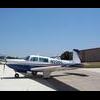Plane goes down in Lake Michigan
-
Members Online
- Hector
- ChuckSchneider
- Parker_Woodruff
- rklems
- RescueMunchkin
- MatthiasArnold
- docjeffry
- Mreed420
- Brandt
- LANCECASPER
- Matthew P
- dzeleski
- Boilermonkey
- hazek
- milotron
- mluvara
- M20F
- flyboy0681
- Ragsf15e
- RideOrFly
- CCAS
- IvanP
- eman1200
- Raistlin
- exM20K
- TCC
- redbaron1982
- PT20J
- Wingover
- Andy95W
- MikeOH
- FoxMike
- jcolgan
- Justin Schmidt


Recommended Posts
Join the conversation
You can post now and register later. If you have an account, sign in now to post with your account.